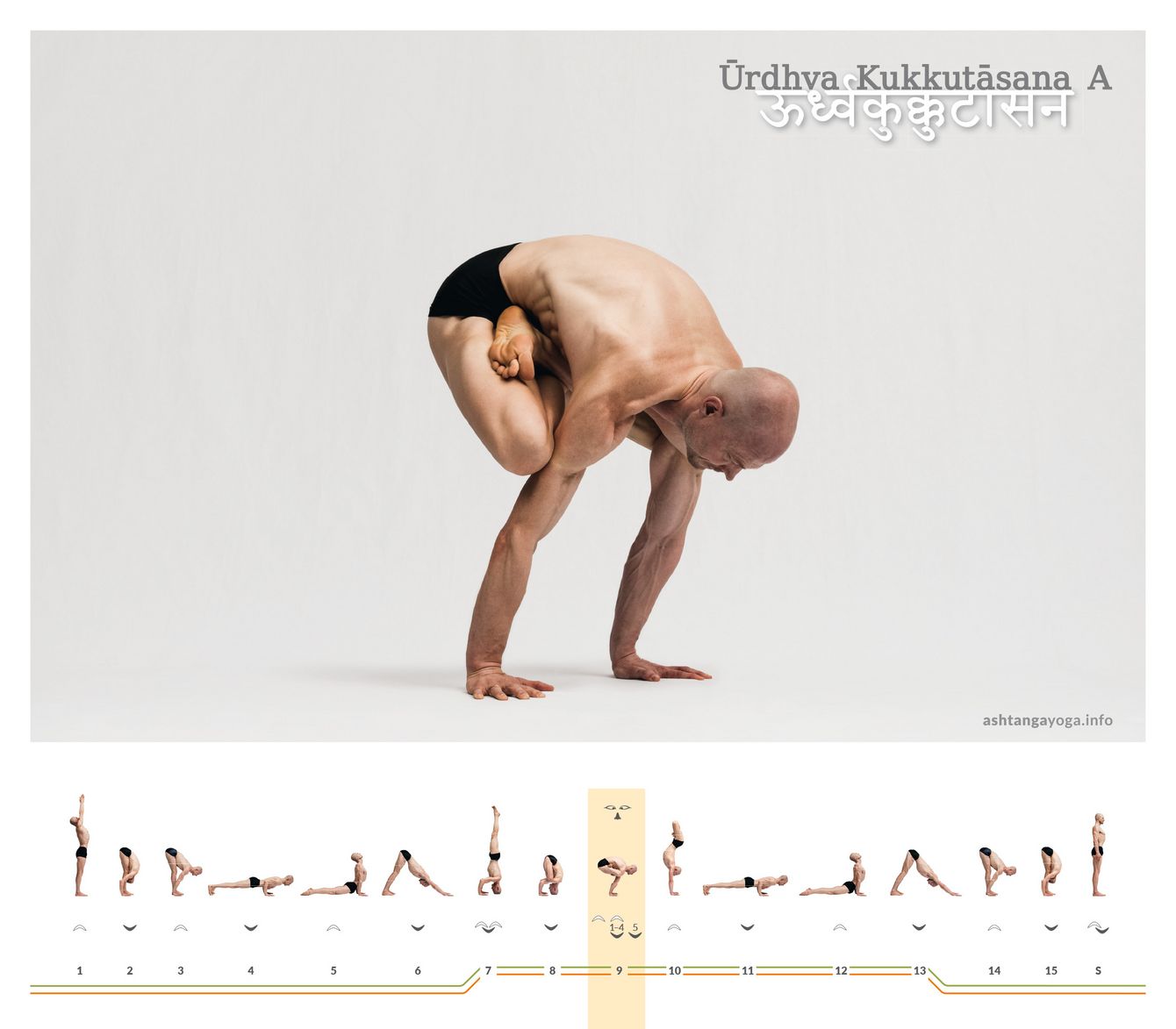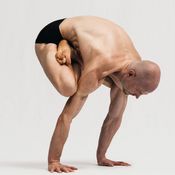

Mythology: Ūrdhva Kukkuṭāsana, like many Yoga poses, is not directly associated with a specific mythological story or deity. However, Yoga as a practice has deep roots in Indian culture and philosophy. Therefore, many Yoga poses and practices are influenced by Hindu mythology and symbolism.
In Hinduism, the rooster is sometimes associated with Lord Kārtikeya (also known as Murugan), the God of War and the Commander of the Gods. Kārtikeya is often depicted riding a peacock, which is associated with him, and roosters are sometimes depicted alongside him as well. While the specific connection between Ūrdhva Kukkuṭāsana and Kārtikeya may not be explicit, the name "Upward Rooster Pose" suggests a potential connection to the rooster symbolism in Hindu mythology.
In the traditional Count: Begin directly from "Downward-Facing Dog" pose in the previous sequence.
Vinyāsa 7 - Inhalation, Exhalation, Inhalation:
Inhale, jump out of the "Downward-Facing Dog" position into an arm balance. Exhale, bend your elbows while extending your legs. Gently place your skull in front of your hands on the ground, so that the three points of contact form an equilateral triangle. Head, shoulder girdle, pelvis, and feet should now be approximately aligned vertically. Inhale here.
Vinyāsa 8 - Exhalation:
With an exhalation, fold your right leg, and then your left leg into the Lotus position. Then lower your folded legs down until your shins reach your armpits.
Vinyāsa 9 - Inhalation, 5 breaths, Exhalation:
Inhale, extend your arms, and lift your head off the ground. By pressing your shins against your armpits, stabilize the posture. Remain here until the fifth exhalation.
Vinyāsa 10 - Inhalation:
Inhale, lift your legs folded into the Lotus position to transition into an arm balance.
Tip: The transition back to the extended hand balance is easier when you first draw your knees firmly to your chest. Then, push your extended arms, starting from the shoulder blades, firmly toward the ground. Now, begin to round your back between the shoulder blades. In this way, your knees lift off from your arms, and you roll your pelvis upward while bringing your shoulders over your hands. Only when hands, shoulders, and pelvis are aligned on top of each other, release your legs from the upper body and move the Lotus pose upward.
Vinyāsa 11 to 13:
Follow the movement flow you are already familiar with until you come to a halt in "Downward-Facing Dog."
In the traditional count: Proceed directly into the movement flow of the next posture.
Effect: "Ūrdhva Kukkuṭasana"" requires significant arm and core strength, as well as open hips and flexibility in the hip and groin area. It strengthens the upper body, particularly the arms, shoulders, and core. Additionally, it is improving balance and coordination. You will develop flexibility in the hips and groin. This pose encourages concentration and mental clarity. Additionally, it may stimulate digestion, promote stress relief, and offer a sense of spiritual connection and personal growth.
Fotograf: Richard Pilnick - www.richardpilnick.com


 Dr. Ronald Steiner
Dr. Ronald Steiner
Messages and ratings